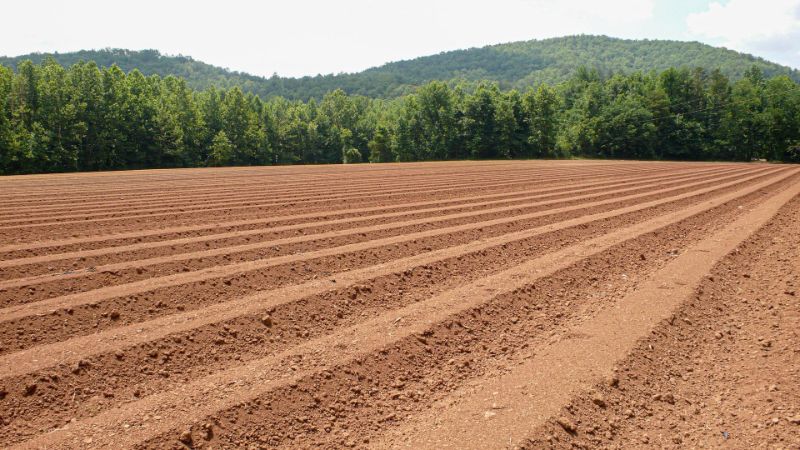There is a lot of soil science literature to choose from, which can make it hard to know where to start if you want to learn more about the topic. In this post, we’ve compiled a list of some of the best books on soil science to get you started. Whether you’re a beginner or an experienced researcher, we’re sure you’ll find something that meets your needs on this list.
Best Soil Science Books
Best Books for Soil Science
Soil Science and Management
Soil Science and Management (Buy Online) is a comprehensive book that covers all aspects of Soil Science. The book starts with an introduction to the importance of soil and its role in supporting plant life. It then covers topics such as soil origin and development, classification, and survey.
It then covers the formation and classification of soils, their physical properties, and the role of organic matter in maintaining a healthy ecosystem. The book also discusses the important topics of soil fertility, drainage, irrigation, tillage, and cropping systems.
The physical properties of soil are also covered in depth, including its structure, texture, and composition. The book also covers the vital topic of soil fertility and discusses how to optimize nutrients for plants.
The book finishes with a discussion on government agencies and programs related to Soil Science and conservation.
With nearly twenty chapters of information, Soil Science and Management is an essential reference for anyone who wants to learn more about this vital resource.
Essential Soil Science : A Clear and Concise Introduction to Soil Science
Essential Soil Science (Buy Online) does an excellent job of explaining the complex concepts of soil science in simple terms, making this book an essential read for anyone interested in learning more about this important topic.
The book covers all the essential topics, including particles, structures, and water; soil surfaces, acidity, and nutrients; soil microbes and nutrient cycling; soil contamination and erosion. Each chapter includes learning exercises and chapter summaries to enhance usability, and there are annotated suggestions for further reading at the end of each chapter.
Essential Soil Science is based on a proven and successful modular course structure, and its emphasis on readability and interactive learning make it an excellent choice for students with little or no scientific background.
Soil Genesis and Classification
Soil Genesis and Classification (Buy Online) readers with a comprehensive understanding of how soils are formed and classified. The book begins with an overview of soil-forming factors, including the role of parent material, climate, organisms, and topography. It then discusses the major types of soils found in different parts of the world, including Alfisols, Andisols, Aridisols, Entisols, Gelisols, Histosols, Inceptisols, Mollisols, Oxisols, Spodosols, and Ultisols.
Each chapter provides a detailed description of the characteristics of each soil type and includes information on its physical properties, chemical composition, and productive potential. With its clear explanations and abundance of illustrative diagrams and photos, Soil Genesis and Classification is an essential resource for anyone interested in learning more about soils.
Nature and Properties of Soils
Nature and Properties of Soils (Buy Online) covers a wide range of topics, including the physical and chemical properties of soils, soil genesis and classification, and the role of soils in plant growth. The book also features a section on soil conservation, making it an essential resource for anyone interested in protecting and managing our natural resources. Whether you are a student or a seasoned professional, Nature and Properties of Soils is sure to provide you with a deeper understanding of soil science.
Soil Fertility and Fertilizers: An Introduction to Nutrient Management
Soil Fertility and Fertilizers: An Introduction to Nutrient Management (Buy Online) is a comprehensive guide to the topic, covering everything from the basics of soil-plant relationships to the role of micronutrients in crop production.
Soil Fertility and Fertilizers cover a broad range of topics related to sustainable agriculture, including the role of nutrients in agricultural ecosystems, the trade-offs between productivity and environmental quality, and the use of ecological principles to optimize nutrient management.
Soils: Genesis and Geomorphology

Soils: Genesis and Geomorphology (Buy Online) is a comprehensive textbook that covers all aspects of soils, from their formation to their classification. The book begins with a discussion of the basics of soil science, including soil morphology, mineralogy, and chemistry. It then delves into more specific topics such as soil physics, organisms, and classification.
The second half of the book focuses on soil genesis, from parent material to final product. Topics covered include weathering, pedoturbation, and profile differentiation. The third and final part of the book addresses soil geomorphology, including topics such as hydrology, development, and surface exposure dating. This section also includes a discussion of paleosols and their role in paleoenvironmental reconstruction.
Introduction to Environmental Soil Physics
Introduction to Environmental Soil Physics (Buy Online) covers all the basics, from the different types of soil to how they interact with plant life and water. The book is divided into seven parts, each covering a different aspect of soil science.
The first part looks at the basic relationships between soil and the environment. The second part explores the solid phase of soil, including its structure and composition. While the third part turns to the liquid phase, examining the properties of water in relation to soil.
Part four looks at the gaseous phase of soil, covering topics such as evaporation and transpiration. In part five, the book explores composite phenomena such as heat transfer and erosion. The final two parts of the book discuss in depth the field water cycle and soil-plant-water relations.
Introduction to the Biogeochemistry of Soils
Introduction to the Biogeochemistry of Soils (Buy Online) is a comprehensive introduction to the study of how chemical, physical, and biological processes affect soils. The book begins with an overview of soils and their role in the environment before delving into the specifics of soil biogeochemistry. The subsequent chapters cover topics such as the soil carbon cycle, field-based properties of soils, and human impacts on soil biogeochemistry. Throughout, the book emphasizes the importance of taking a holistic approach to understanding soil processes.
Fundamentals of Soil Ecology
Fundamentals of Soil Ecology (Buy Online) is written by a team of experts, and the book provides a comprehensive overview of the field, covering everything from historical developments to future directions.
In addition to providing essential information on the role of soils in ecology, the book also includes a variety of laboratory and field exercises that are designed to help readers gain a more hands-on understanding of the subject.
The book starts with a historical overview of soil science and the intersection of soil and ecology. It then delves into primary production processes in soils, such as roots and rhizosphere associates. The book also covers secondary production, decomposition, and nutrient cycling. In addition, Fundamentals of Soil Ecology discusses soil food webs and above-ground-below ground linkages.
The book concludes with a look at future developments in soil ecology and laboratory and field exercises in soil ecology. As a result, this book is an essential resource for anyone interested in pursuing a career in the field of soil science.
Soil Science Simplified
Soil Science Simplified (Buy Online) provides a clear and concise introduction to the field. It covers all the basics of soil science, including soil formation, physical properties, biological properties, chemical properties, water, temperature, fertility, and management. In addition, the book provides an overview of soil classification and surveys as well as a section on conservation and the environment.
Best of all, Soil Science Simplified is written in plain English, making it easy to understand even for those with no prior knowledge of the subject. Whether you’re a gardener looking to improve your skills or a student seeking a resource for a soil science class, Soil Science Simplified is the perfect resource.
Plant & Soil Science: Fundamentals & Applications
Plant & Soil Science: Fundamentals & Applications (Buy Online) is a comprehensive book that covers all the basics of plant and soil science. The book is split into twenty-eight chapters, each of which covers a different aspect of the subject. Each chapter features learning objectives, key terms, charts, illustrations, and color photographs. This makes Plant & Soil Science: Fundamentals & Applications an excellent resource for anyone wanting to learn more about the complex and fascinating interrelation between plants and their rhizospheric environment.
Table of Contents

















